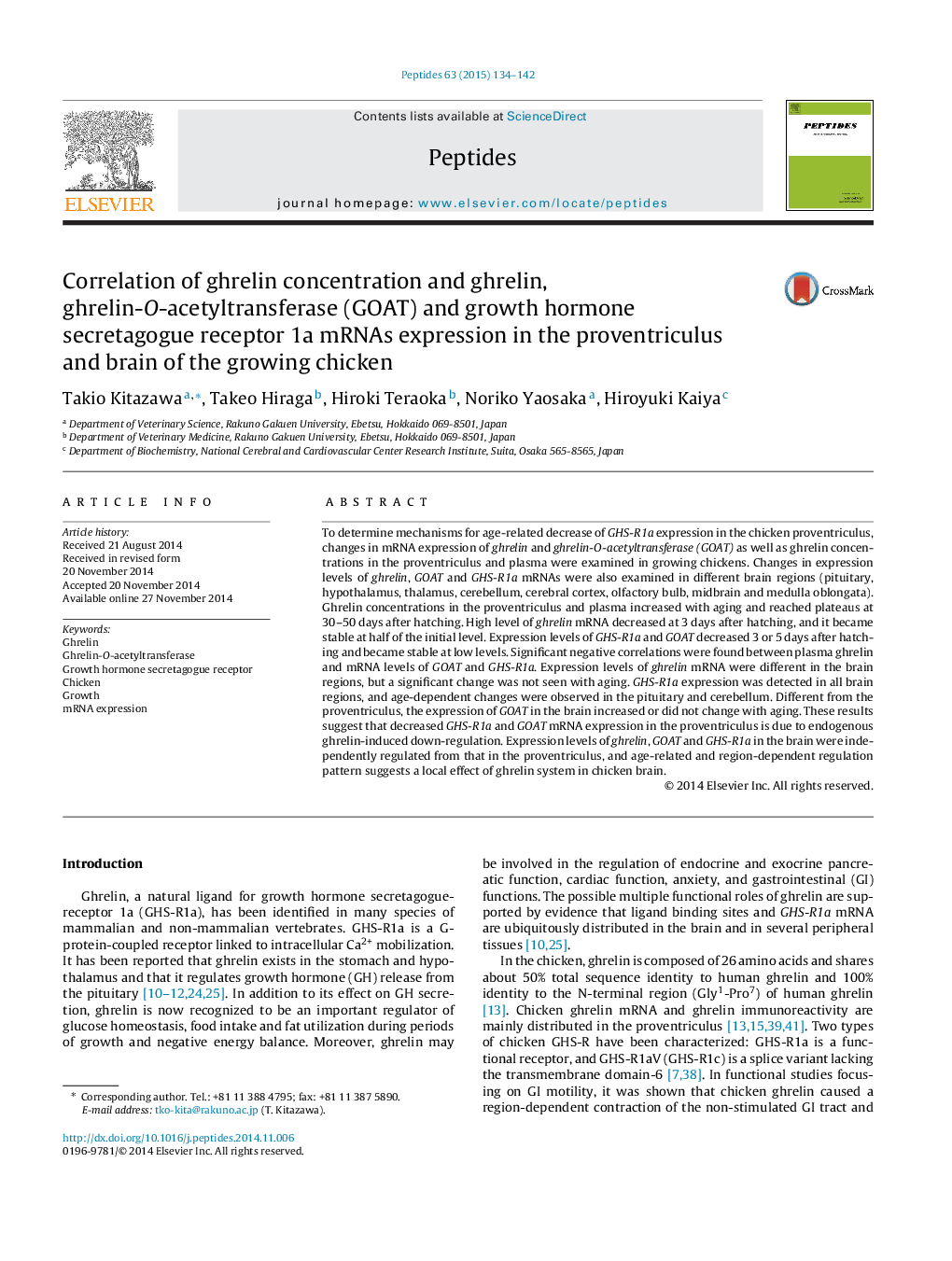| Article ID | Journal | Published Year | Pages | File Type |
|---|---|---|---|---|
| 8348201 | Peptides | 2015 | 9 Pages |
Abstract
To determine mechanisms for age-related decrease of GHS-R1a expression in the chicken proventriculus, changes in mRNA expression of ghrelin and ghrelin-O-acetyltransferase (GOAT) as well as ghrelin concentrations in the proventriculus and plasma were examined in growing chickens. Changes in expression levels of ghrelin, GOAT and GHS-R1a mRNAs were also examined in different brain regions (pituitary, hypothalamus, thalamus, cerebellum, cerebral cortex, olfactory bulb, midbrain and medulla oblongata). Ghrelin concentrations in the proventriculus and plasma increased with aging and reached plateaus at 30-50 days after hatching. High level of ghrelin mRNA decreased at 3 days after hatching, and it became stable at half of the initial level. Expression levels of GHS-R1a and GOAT decreased 3 or 5 days after hatching and became stable at low levels. Significant negative correlations were found between plasma ghrelin and mRNA levels of GOAT and GHS-R1a. Expression levels of ghrelin mRNA were different in the brain regions, but a significant change was not seen with aging. GHS-R1a expression was detected in all brain regions, and age-dependent changes were observed in the pituitary and cerebellum. Different from the proventriculus, the expression of GOAT in the brain increased or did not change with aging. These results suggest that decreased GHS-R1a and GOAT mRNA expression in the proventriculus is due to endogenous ghrelin-induced down-regulation. Expression levels of ghrelin, GOAT and GHS-R1a in the brain were independently regulated from that in the proventriculus, and age-related and region-dependent regulation pattern suggests a local effect of ghrelin system in chicken brain.
Related Topics
Life Sciences
Biochemistry, Genetics and Molecular Biology
Biochemistry
Authors
Takio Kitazawa, Takeo Hiraga, Hiroki Teraoka, Noriko Yaosaka, Hiroyuki Kaiya,
